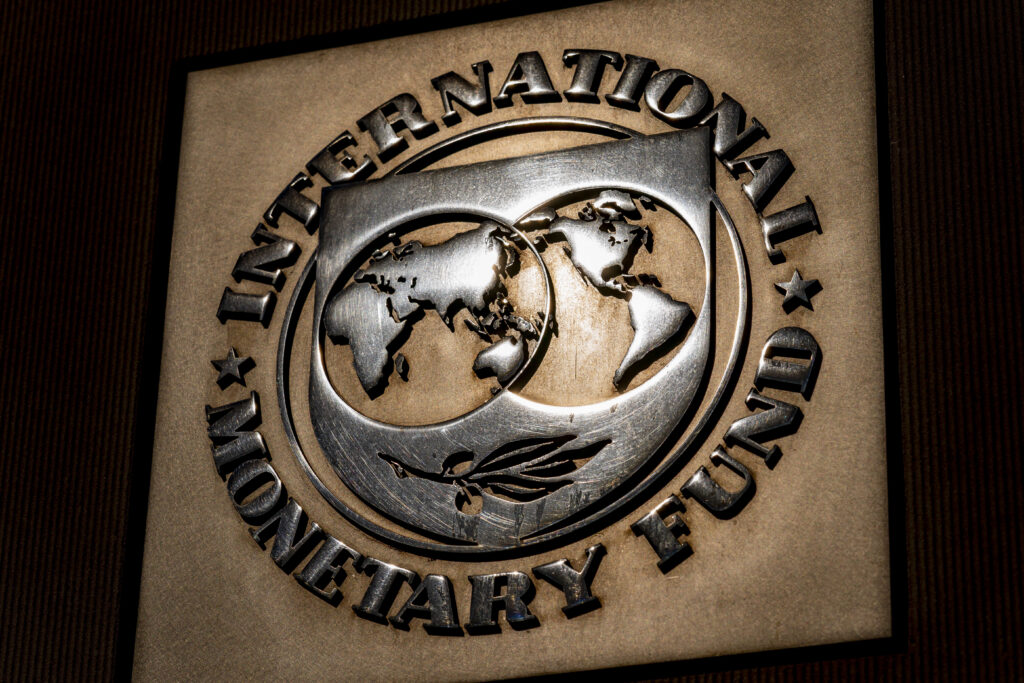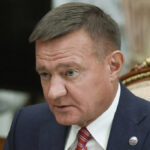The International Monetary Fund warned Tuesday the risk of a recession has grown for advanced economies in the wake of bank failures in the U.S. and Europe while slightly lowering its outlook for global growth this year. The IMF projects the global economy will expand at 2.8% this year, a hair lower than its January estimate of 2.9%. The Associated Press has the story:
IMF warns of ‘hard landing’ for global economy
Newslooks- WASHINGTON (AP)
The outlook for the world economy this year has dimmed in the face of chronically high inflation, rising interest rates and uncertainties resulting from the collapse of two big American banks.
That’s the view of the International Monetary Fund, which on Tuesday downgraded its outlook for global economic growth. The IMF now envisions growth this year of 2.8%, down from 3.4% in 2022 and from the 2.9% estimate for 2023 it made in its previous forecast in January.
The fund said the possibility of a “hard landing,” in which rising interest rates weaken growth so much as to cause a recession, has ”risen sharply,” especially in the world’s wealthiest countries.

“The situation remains fragile,” Pierre-Olivier Gourinchas, the IMF’s chief economist, told reporters Tuesday. ”Downside risks predominate.”
The IMF, a 190-country lending organization, is forecasting 7% global inflation this year, down from 8.7% in 2022 but up from its January forecast of 6.6% for 2023.
“Inflation is much stickier than anticipated even a few months ago,’’ Gourinchas wrote in the IMF’s latest World Economic Outlook.
Persistently high inflation is expected to force the Federal Reserve and other central banks to keep raising rates and to keep them at or near a peak longer to combat surging prices. Those ever-higher borrowing costs are expected to weaken economic growth and potentially destabilize banks that had come to rely on historically low rates.
Already, Gourinchas warned, higher rates are “starting to have serious side effects for the financial sector.’’

The fund foresees a 25% likelihood that global growth will fall below 2% for 2023. That has happened only five times since 1970, most recently when COVID-19 derailed global commerce in 2020.
The IMF also envisions a 15% possibility of a “severe downside scenario,” often associated with a global recession, in which worldwide economic output per person would shrink.
The global economy, the fund warned in Tuesday’s report, is “entering a perilous phase during which economic growth remains low by historical standards and financial risks have risen, yet inflation has not yet decisively turned the corner.”
The IMF issued modest upgrades to the economies of the United States and Europe, which have proved more resilient than expected even with much higher interest rates and the shock of Russia’s invasion of Ukraine.

The fund now expects the United States, the world’s biggest economy, to grow 1.6% this year, down from 2.1% in 2022 but up from the 1.4% expansion that the IMF had predicted in January. A robust U.S. job market has supported steady consumer spending despite higher borrowing rates for homes, cars and other major purchases.
U.S. Treasury Secretary Janet Yellen plans to give an optimistic speech Tuesday about the state of the U.S. economy and the banking system, which she will say “remains sound.”
“During the G20 in February, I said that the global economy was in a better place than many predicted last fall,” Yellen will say in prepared remarks. “That basic picture remains largely unchanged. Still, we remain vigilant to the downside risks.”
For the 20 countries that share the euro currency, the IMF foresees lackluster growth of 0.8%. But that, too, marks a slight upgrade from its January forecast. Though Europe has suffered from the wartime cutoff of Russian natural gas, a surprisingly warm weather reduced demand for energy. And other countries, including the United States, were nimbler than expected in delivering natural gas to Europe to replace Russia’s.

China, the world’s second-biggest economy, is expected to grow 5.2% this year, unchanged from the IMF’s January forecast. China is rebounding from the end of a draconian zero-COVID policy that had kept people home and had hobbled economic activity.
In the United Kingdom, where double-digit inflation is straining household budgets, the economy is expected to contract 0.3% this year. But even that is an upgrade from the 0.6% drop that the IMF had predicted in January for the U.K.
In the developing world, the IMF downgraded growth prospects for India, Latin America, the Middle East, Sub-Saharan Africa and the less-developed countries of Europe. Ukraine’s war-ravaged economy is forecast to shrink by 3%.
The world economy has endured shock after shock in the past three years. First, COVID-19 brought global commerce to a near-standstill in 2020. Next came an unexpectedly strong recovery, fueled by vast government aid, especially in the United States. The surprisingly powerful rebound, however, triggered a resurgence of inflation, worsened after the Russian invasion of Ukraine drove up prices of energy and grain.

The Fed and other central banks responded by aggressively raising rates. Inflation has been easing, though it remains well above central banks’ targets. Inflation is especially intractable in services industries, where worker shortages are putting upward pressure on wages and prices.
Higher rates have caused problems for the financial system, which had grown used to extraordinarily low interest rates.
On March 10, Silicon Valley Bank failed after making a disastrous bet on falling rates and absorbing heavy losses in the bond market, news of which triggered a bank run. Two days later, regulators shut down New York-based Signature Bank. The failures were the second- and third-largest in U.S. history. In the wake of the troubles, U.S. banks are expected to cut back on lending, which could hurt economic growth.







